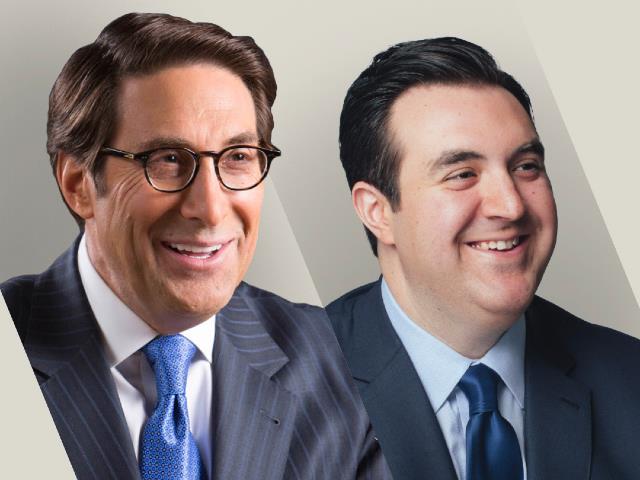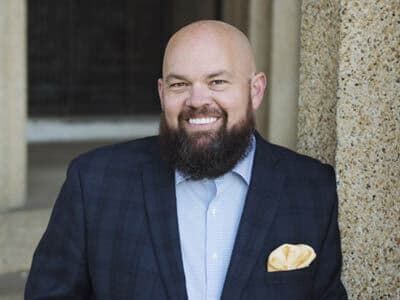Pete Hegseth had a lot to say when he summoned military leaders. Here are some facts and context
News > Politics & Government News

Audio By Carbonatix
4:40 PM on Tuesday, September 30
By JULIE WATSON, LAURIE KELLMAN and DEEPTI HAJELA
NEW YORK (AP) — Armed with a 10-point plan and pacing a stage in Quantico, Virginia, on Tuesday, Defense Secretary Pete Hegseth enumerated for hundreds of assembled military leaders just how much of the force's policy, philosophy and culture will change for more than 2 million Americans in uniform under President Donald Trump's command.
"For too long, we’ve promoted too many uniformed leaders for the wrong reasons based on their race, based on gender quotas, based on historic so-called firsts," Hegseth said. The approach, he said, made the Pentagon “less capable and less lethal.” Hegseth talked up his and Trump’s focus on “the warrior ethos” and “peace through strength."
“No more identity months, DEI offices, dudes in dresses. No more climate change worship, no more division, distraction or gender delusions. No more debris,” he declared.
Here are some of Hegseth's words and some context behind them:
WHAT HE SAID: “Any place where tried and true physical standards were altered, especially since 2015, when combat arms standards were changed to ensure females could qualify, must be returned to their original standard.”
THE BACKSTORY: It's not clear what Hegseth meant by returning physical expectations to their “original standard.” But military culture and the role of women have changed dramatically in recent decades, and Hegseth aims to change them back.
In 2015, then-Defense Secretary Ash Carter ordered that all military jobs be open to women. That change followed three years of study and wrangling and was a formal recognition that thousands of women had served — and many were wounded or killed — on battlefields in Iraq and Afghanistan.
Carter said then that the military could no longer afford to exclude half the population from high-risk military posts and that any man or woman who meets the standards should be able to serve. Special operations forces, in surveys done in 2015 and more recently, said women lacked the physical or mental strength to serve in elite commando units and doing so could hurt the units’ effectiveness.
Hegseth said the policy will be to ensure that “every designated combat arms position returns to the highest male standard.” But he was careful to say that the policy is not an effort to block women from serving.
“When it comes to any job that requires physical power to perform in combat, those physical standards must be high and gender neutral,” he said. “If women can make it, excellent. If not, it is what it is. If that means no women qualify for some combat jobs, so be it. That is not the intent, but it could be the result.”
Jenn Bennie, an Iraq War veteran and former combat helicopter pilot, said she agrees with Hegseth's comments. “That is the standard I upheld when I became a Navy pilot in 2001. It was a pilot standard and it benefits everyone, including women who have met that universal requirement,” she wrote in an email. "It lets everyone know that every pilot is mentally and physically combat-capable to go into warfare, putting no one under undue risk.”
WHAT HE SAID: “What were the military standards in 1990? And if they have changed, tell me why. Was it a necessary change based on the evolving landscape of combat, or was the change due to a softening, weakening or gender-based pursuit of other priorities?”
THE BACKSTORY: Before 1991, women were barred by law from flying combat missions and serving on naval combat ships. Noting the performance of female pilots in the Persian Gulf War, Congress rescinded the laws in the early 1990s. By 1994, women were allowed to serve in most roles not involving direct ground combat.
Faced with the fallout of the Vietnam War and racial tensions within the ranks, the military was trying to boost recruitment numbers, said Gary Solis, a former Marine Corps prosecutor and military judge who has taught the laws of war at universities.
“It was needed and I don’t believe it weakened the military,” Solis said.
In 1991, the U.S. launched its assault on Iraqi forces in Kuwait. In purely military and political terms, the first Gulf War was a tremendous success. The U.S. held together an allied army, its war effort was supported by a number of United Nations resolutions, and the conflict cemented its position as the sole world power following the end of the Cold War and the collapse of the Soviet Union.
WHAT HE SAID: “Frankly, it’s tiring to look out at combat formations or really any formation and see fat troops. Likewise, it’s completely unacceptable to see fat generals and admirals in the halls of the Pentagon and leading commands around the country and the world. It’s a bad look.”
THE BACKSTORY: Three-quarters of Americans aged 17 to 24 are not eligible for military service for several reasons, including extra weight. Being overweight is the biggest individual disqualifier, affecting more than 1 in 10 potential recruits, research has showed.
Some have debated whether the physical requirements demanded of service members across the board are still relevant or should be adjusted according to the job so the armed forces can maintain the pool of talent it needs for today’s high-tech warfare, while competing with higher salaries offered by the private sector.
In 2016, the Navy loosened its body fat restrictions to allow those who failed their physical fitness exams three or more times to get one more opportunity to be tested under the more lenient guidelines. The Navy said at the time it had been losing too many talented sailors. Some were resorting to liposuction, diet pills and other measures to save their careers.
Then-Navy Secretary Ray Mabus said the service was not lowering standards but rather adjusting to reality: People today, in general, are bigger but not necessarily fat.
WHAT HE SAID: “You kill people and break things for a living. You are not politically correct and don’t necessarily belong always in polite society.”
THE BACKSTORY: The throughline of Hegseth's remarks was that members of the military are there to, first and foremost, “unleash overwhelming and punishing violence on the enemy,” through continual mission training and maintaining equipment. In terms of attitude, he said he expected aggressiveness and risk-taking and turning away from what he has called a “woke” culture that he says has weakened the military.
That was why, he told the gathered military leaders, the changes being implemented would include how complaints alleging toxic leadership are dealt with, how infractions would be recorded on personnel records, and how promotions would be handled.
Since taking on the role, Hegseth has ordered significant cuts to the top military ranks and has fired several leaders, including the chairman of the Joint Chiefs of Staff, a Black general, and the woman who was the Navy's top officer. On Tuesday, he said his reasoning for those firings was that “it’s nearly impossible to change a culture with the same people who helped create or even benefited from that culture.”
But the idea that the U.S. military isn't well-trained and highly effective “is almost disparaging to them,” said Richard Kohn, professor emeritus of history and peace, war and defense at the University of North Carolina.
“They’ve been in combat, they’ve been adopting and adapting to very complex weapons systems. And we have very lethal armed forces," he said. "It makes you scratch your head wondering who (Hegseth and Trump) think they’re leading when they have to give a talk like this.”
And the modern American military isn't just about fighting; it's about diplomacy and problem-solving. That's why diversity and different perspectives help, said Rebecca Best, associate professor of political science at the University of Missouri at Kansas City.
“When you view the military’s purpose as just about going out guns blazing and killing people, then you might think, well, you don’t need diversity to just go out and kill people,” she said. “But you do need diversity if what you really need to do is problem-solve."
_____
Kellman reported from London and Watson from San Diego.











